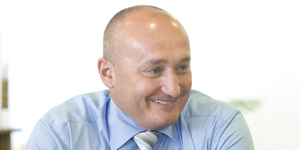There are two motifs at the Hungarian stand. On one shelf, foreign-language translations of Hungarian authors. In another corner, recent literary hits. The rest is scandalous. Our report from the scene.
Let's be clear: the Book Fair is not one, jumbled up book warehouse. This is surely obvious, so why do I point it out? Well, from my visit to the Hungarian stand at the fair it would seem that some of my compatriots are unaware of this. Our stand does not represent our literary life - that, thankfully, is at a far higher level.
I spent some time there, looking round in despair. I preferred to see Attila Bartis's and György Konrád's latest books at the German publisher Suhrkamp's stand. It was better seeing Márai at Piper. I could see Zsuzsa Bánk, Eszterházy and Kertész in the most recent issue of Literaturen , and I still hadn't seen all the Hungarica on display in Frankfurt.
The Hungarian stand had no guiding conception, it had not design, no style. If there was indeed a conception, then things are even worst. Ugly grey columns, ugly grey shelves - this is worse than simple minimalism. Books on shelves, but what for? Creating an interior space is an art-form, people get degrees in it - there's no point in taking a DIY approach, because the end result will be something like the Hungarian stand I see before me. We don't entrust book publishing to building engineers or to greengrocers. If there was a specialist, then he would have done well to think about it, maybe pay a visit to the Writers' Shop on Andrássy út, or maybe just glance at its shop windows.
There are strong counter-examples in Frankfurt. I'm no talking about the literary superpowers, and the successful ideas are not always the most complicated ones. The Latvian stand is simple, transparent, airy. The books are arranged thematically: literature, children's books, art albums, historical works, cookery books, etc. And the publications are themselves tasteful. It's not hard. The Poles had large, black and white author portraits. The Romanian stand was in lively yellow.
There were two intelligent aspects to the Hungarian stand. One shelf exhibited Hungarian authors in translation. There was no order, but anybody with some patience can browse. And then there were recent literary hits in the other corner: Rakovszky, Gercsó, and Nádas of course. That's ok - only ok, because they were on ugly shelves in an ugly environment. But the rest of it was far worse.














